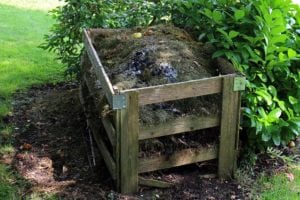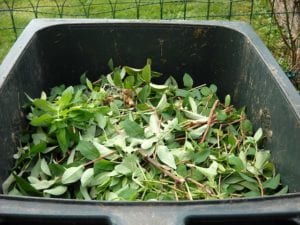Compost Basics
Composting is a natural, biological process in which decaying material is broken down by microorganisms and returned to the earth where it can be used again as nutrients for future plants. Compost is one of the most beneficial materials you can add to your landscape and gardens. It can be used as a fertilizer and soil conditioner. You can use compost as a mulch to help regulate soil moisture and temperature, and supply many nutritional needs to turf and other plants. Our poor quality soil in San Antonio can use all the help it can get. Adding compost is a great way to amend your soils.
It’s easy to create your own compost. To be successful you only need a few items and elements. We’ll talk about each of them on this page so you’ll easily know exactly what you need to start your own compost pile. For those of you who don’t desire to make your own compost, Rainbow Gardens supplies soil conditioners and compost in bagged form at our nurseries for your convenience.
Starting a compost pile:
- Space: You can purchase a compost bin, make one, or start composting in an area on the ground. A compost bin generally speeds up the compost process a little and can keep animals out of your compost, but they are generally more costly. A DIY compost bin can be as easy a 3 foot circle of fine wire mesh (¼” between wire) that stands 3-4’ high. Or you can make one from recycled pallets. You can also just let your compost pile start right on the ground.
- Air Circulation: The best conditions for rapid and thorough composting, allow for air circulation. Start your compost pile with 3” of coarse material like branches and twigs. Air can then circulate from the bottom and up through the compost pile. You also create air circulation when you turn your compost pile, which you will need to do regardless, every two weeks or so. Turn with a pitchfork, shovel, or garden probe, bringing the bottom of the pile to the top, opening air pockets in the process.
- Carbon and Nitrogen: The core of your compost is carbon and nitrogen, mostly in plant form. High carbon materials are dried leaves, bark, sawdust, wood chips, etc. High nitrogen/high protein materials are fresh grass clippings, vegetable matter, kitchen waste, and manure. Add these materials to the compost bin, in alternating layers, on top of your coarse layer, to a height of about 6”. When adding manure, just don’t add too much (probably only 10-15%).
- Water: Your compost needs water for the breakdown process. The compost should be moist, but not soggy; it should have the feel of a squeezed out sponge. In periods of prolonged rainy days, you may need to cover it with a tarp for a bit, otherwise your compost will get soggy, compacted and difficult to turn.
What NOT to put in your compost pile:
- Certain food scraps need to be left out of your compost. These include meat, dairy, fish, grease, and fatty foods.
- Plant material in your compost bin should be free of any weeds, and any plants with disease or fungus. Discard those types of plants to the trash.
- Not all poop is created equal. While you can add horse, cow, and chicken manure, you should NOT be adding any pet feces. This can contain parasites, disease, germs, and bacteria.
- Make sure you only use your compost once it has been thoroughly composted. You’ll know it’s ready to use when it looks dark brown, crumbly, and most of the materials put in there are unidentifiable. Your compost should not stink. It should have a wonderful, earthy smell.




Trackbacks/Pingbacks